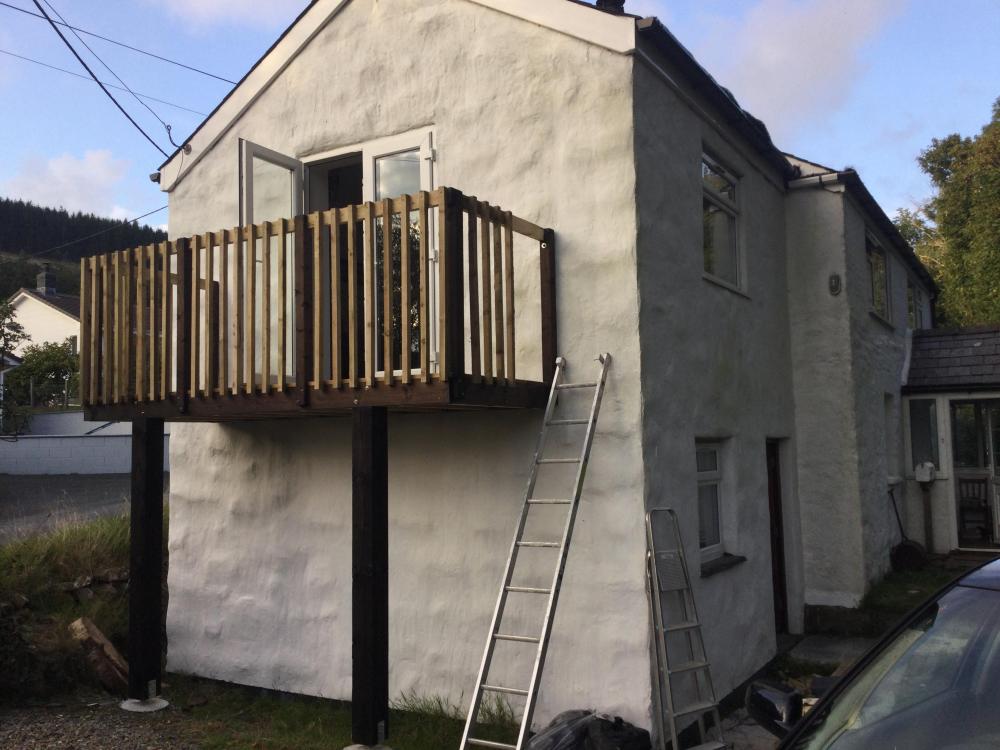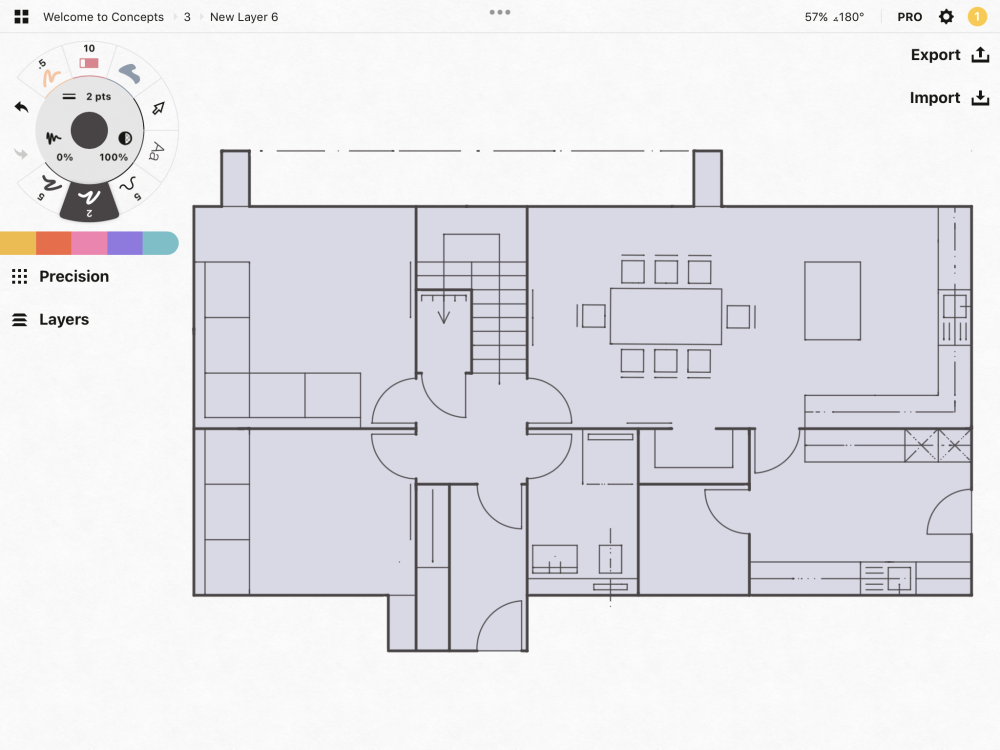Leaderboard
Popular Content
Showing content with the highest reputation on 09/20/22 in all areas
-
We've been employing an ex local authority planning consultant and I think she lives on the same parallel universe as the planning department. So far our plans have been rejected 3 times and now we're taking it to appeal. Best of luck, local authorities are answerable to no one, and time scales don't apply to them. They are a law unto themselves.3 points
-
Good news. The shutters worked. Well, the one that I chose to make from OSB (god knows why), had me on the edge of my seat, but I think we're good. I'll perhaps add some pics when I get a few mins.2 points
-
If it’s internal, then it’s ok to use pushfit immediately from that fitting. However, you cannot ( should not ) put JG into Hep2o and vice versa. So, use a bit of copper as you say, and a Hep2o straight connector and then onto Hep2o pipe to be 100% kosher.2 points
-
Use copper?! If someone turns up to site and says they’ll install any make of pushfit pipe externally, ask them to get back in their van and look for less of an idiot. I’ve just finished 1st fixing a clients entire house in Hep2o and have handed over to a 2nd fix plumber that the client sourced. Muppet has put JG Speedfit inserts and JG fittings onto the ends of my Hep2o pipe runs, right next to the last hep2o fittings, in plain view, and connected the sinks / basins with what he clearly regularly uses. I even left Hep2o fittings on site. Ffs 🤬. No circling / collars on them, to stop the JG stuff from doing their party-trick ( slowly unscrew themselves and blow off the pipe ), and they’re getting boxed in. Tres bien 😕 Guess I’ll now go and cut those out and do them properly. Seriously…..why do I bother?!?!?2 points
-
Agree totally, but it is not the same, at all, for the same system with a wooden floor for space heating. The OP does that ask for warm feet, they are asking for space heating, so I was very specific in how I replied. Wood doesn’t ‘retain the heat’ like tiles do, and as such makes a very poor, near sporadic emitter of heat. Bathrooms also get tolerated when just a little “too warm” whereas this space will become nigh on intolerable in the same situation. Apples and oranges I think.2 points
-
2 points
-
Don’t forget you also have to live in it for 3 years to keep the exemption1 point
-
Sorry, I seem to have missed this. Clients with these installed ( in PH settings ) have reported sub 1oC/hr losses from the Telford cylinders. Back in the day I commissioned Telford to make me a “super-cylinder”, with 100mm of spray foam applied. Turns out on paper it had worse credentials than the 50mm of standard injected foam. Go figure Pay 3x the price for a slightly better performing unit, and then sit down and work out how many times you’ll have to live to receive the benefit. Manufacturers state wonderful facts and figures, but few state that they’ve not allowed for losses from the unavoidable connected pipework etc. Sub 1oC/hr losses will satisfy most. Back to my cheesecake now. Tonight it’s vanilla with some strawberries and cream. At least I’ll die happy 😆1 point
-
Assume you requested and had your self build exemption approved prior to commencement? And that you did a form 6 notice of commencement before breaking ground? If so then part 2 is about proving that you own the property for which you are claiming self build exemption. I don’t believe there is anything in the requirements that states the title deed must be solely for the property - just that the deeds encompass the property being claimed and that you are on the title for said deeds. You will struggle to get the deeds split, completed and confirmation registered with land registry within 6 months ( required for part 2). We are waiting for land registry to confirm receipt of our plot title completed 9 months ago. Currently the backlog for title registrations is 2 years our solicitor informs me 🙄. Although you can expedite if needed.1 point
-
1 point
-
And don’t let the door hit you on the ass on the way out. 👋1 point
-
Common problem is sludge settling out in the summer and blocking pipes. If the new pump doesn't fix things try turning off all rads that get hot so water is forced through the cold ones. Each time a new rad gets hot shut it off. Repeat until they have all been hot at least once then you can reopen them. Once it's all been stirred up I'd drain and flush the system a few times. When happy it's all working put the right amount of Fernox F1 in the system.1 point
-
Three voices of reason, Buildhub hath spoken. I'll keep it simple and worry about other things. Thanks all 👍1 point
-
We have all vaulted ceiling and used pre made standard size doors. They don't look odd or small. You may be other thinking. A previous house we renovated needed new doors and every one was a different width and height, cost a small fortune to replace, as each was made to order.1 point
-
One of the selling points of Icynene foam is it's airtightness. We didn't use any airtightness membranes or tapes in our TF house. We relied on the OSB3 racking board and the Icynene for our airtightness which came out at 0.47ACH.1 point
-
1 point
-
My BCO just said to me, when visited here in june 'do 95mm between spindles, & 1100mm to handrail'. zh1 point
-
Oak planks front and back and slab insulation between all in an oak surround.1 point
-
Why are the frames out of square ..?? Can you not pull the architraves off and have a look at the framing ..? Make them square and plumb and then it should make it easier to put the doors in as standard.1 point
-
You can plane the doors to size up to a limit specified by the manufacturer. Is that an option that will let you use a stock size? Look at imperial as well as metric sizes to find one close enough.1 point
-
Sharp sand aka paving sand aka concreting sand. Save the soft stuff you have for pointing and other jobs.1 point
-
For bedding the slabs on you need sharp sand, building sand is too soft and will flow so could leave voids under the slabs1 point
-
1 point
-
Does it coincide with the heating going on or off? Heating pipes can make quite a bang as they expand and contract.1 point
-
Onoff's bathroom thread was started in 2007, & is still going on apparantly. Some members have actually died during it. zh1 point
-
1 point
-
1 point
-
OK, thanks. OK, so a room off an otherwise already heated room? Or a doorway between the two spaces? Assuming 3 external walls, an adversely cold floor, and the height plus Velux. 200w/m2 is quite an aggressive in terms of UFH, so you'll likely get under and over shoot, exacerbated by the floor temp probe and the room stat both trying the manage that heat input to floor vs heat getting to space scenario ( so they'll be constantly squabbling tbh ). Heating the room ( space ) will require turning this on a good while before using the space, so you'll need a self-learning stat like the Warmup 3 or 4iE / other stat / controller that offers that feature aka "setback". These work out how long it takes from inputting energy into the floor to getting the air temp of that space to the required stat temp ( 20.5oC for eg ) and it then alters the switch on time to allow it to come on sooner than the timer is actually set for. It will be very slow to react, will overreact due to the minimal 'thermal content' of the heated emitter ( you wooden floor ) so really not advisable. You'd be FAR better off with a tiny oil filled radiator, which will heat that space up pretty much instantly and waste next to no heat. Hopefully I have helped you understand why this is a bad idea.1 point
-
1 point
-
Does everyone but me know what the frames are made from? I wouldn't go anywhere near solvents unless certain they'd be harmless. Vegetable oil, olive oil if you're posh, silicone spray or WD40 (a mixture of oil and silicone).1 point
-
Put 2 hand saws together, bolt through hanging hole at the tip and a clamp near the handles to pull blades together, odd to use but does the job0 points
-
0 points
-
0 points
This leaderboard is set to London/GMT+01:00













